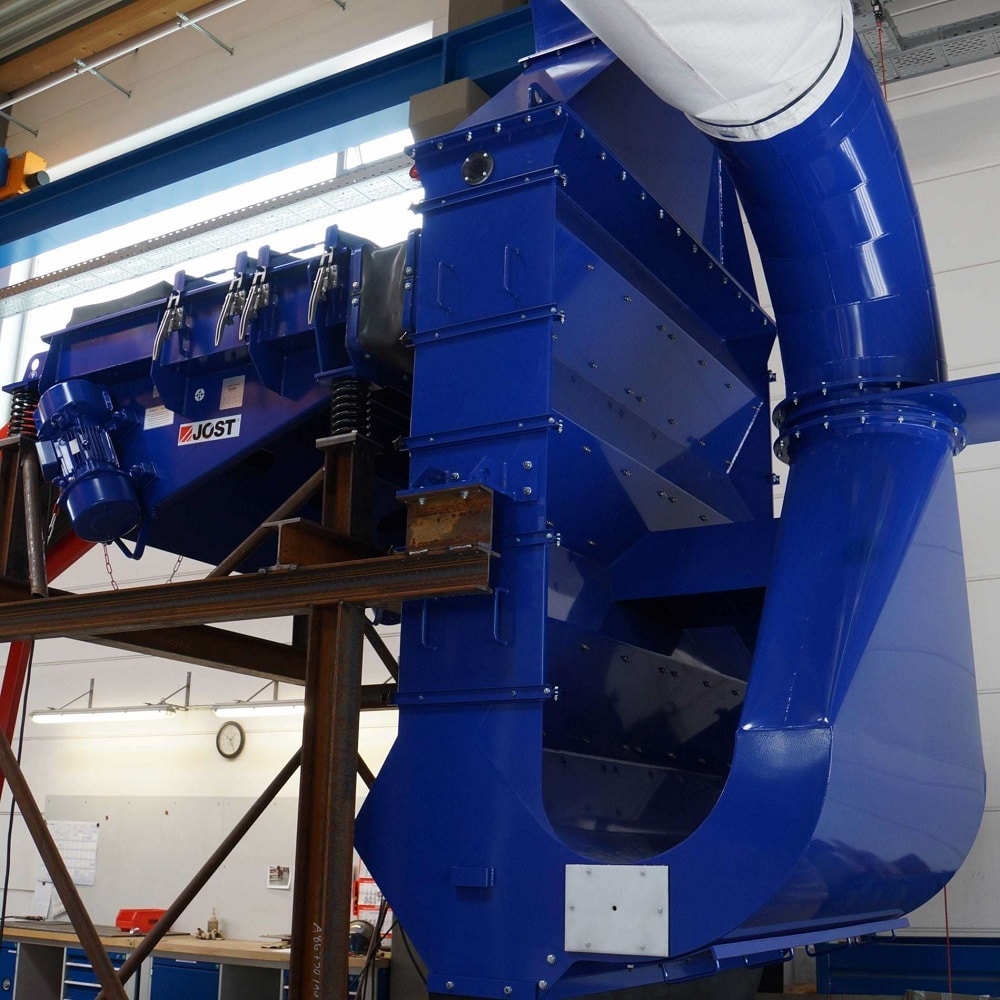The starting material is conveyed into the zig-zag-shaped sifter channel through an airtight feed mechanism. Here, lighter materials are separated from heavier ones using a multiple cross-flow sifting process. The air required for this separation process flows from bottom to top through the sifting channel. The lighter particles are swept away with the air current while heavier particles fall toward the bottom against the flow of air and are discharged at the base of the separator.
The light material carried by the air flow exits out the top through the sifter channel and is conveyed via ducts to the cyclone where it is then separated and discharged through a rotary gate valve. In general, zig-zag air separator systems operate in recirculation mode, where a ventilator blows the purified air back into the base of the separator. For very dusty or moist products it is also possible to operate the system in partial recirculation or suction mode. The required air flow is provided by a radial ventilator.
- Up to 15 separation levels
- Turnkey plant solutions possible
- Feed hopper
- Custom configurations possible
| Type | Air volume (m³/h) | Mass flow (t/h) | Installed output (kW) |
|---|---|---|---|
| SepK 15/80×120 | 300-600 | 0.1-0.2 | ~3 |
| SepK 12/120×360 | 750-1,500 | 0.8-1.5 | ~4 |
| SepK 12/180×540 | 1,750-3,500 | 1.8-3.5 | ~8 |
| SepK 12/180×900 | 2,900-5,800 | 2.9-5.8 | ~12 |
| SepK 9/250×1200 | 5,400-10,800 | 5.4-11 | ~25 |
| SepK 6/250×1500 | 6,750-13,500 | 6.8-14 | ~35 |
| SepK 6/250×2000 | 9,000-18,000 | 9-18 | ~42 |
| SepK 6/350×2000 | 12,000-24,000 | 12-24 | ~50 |






